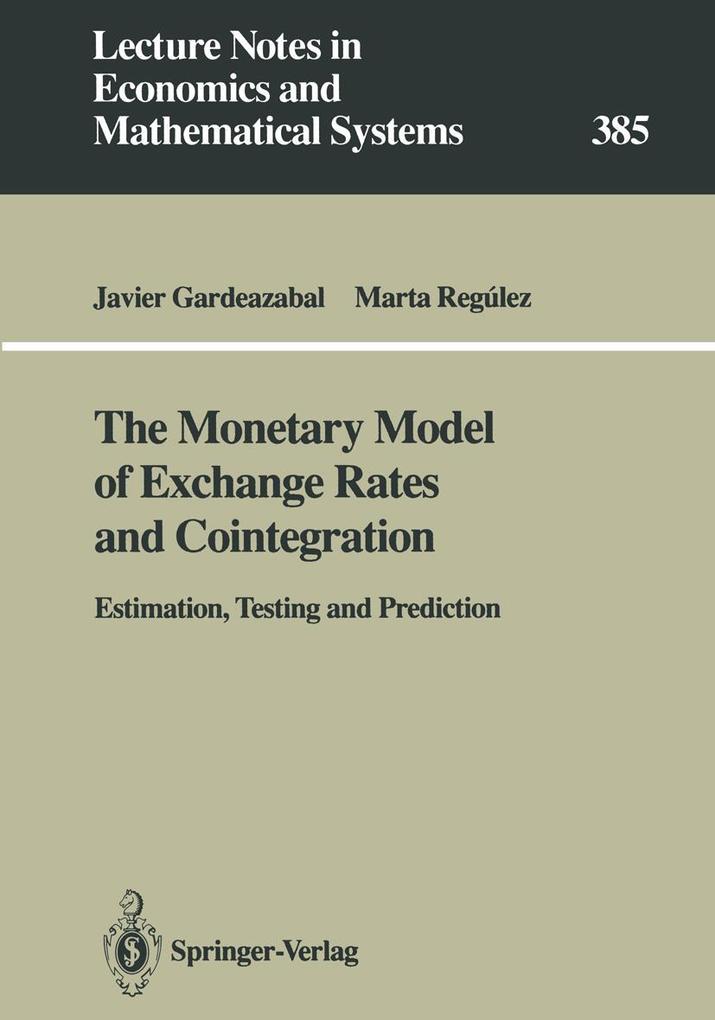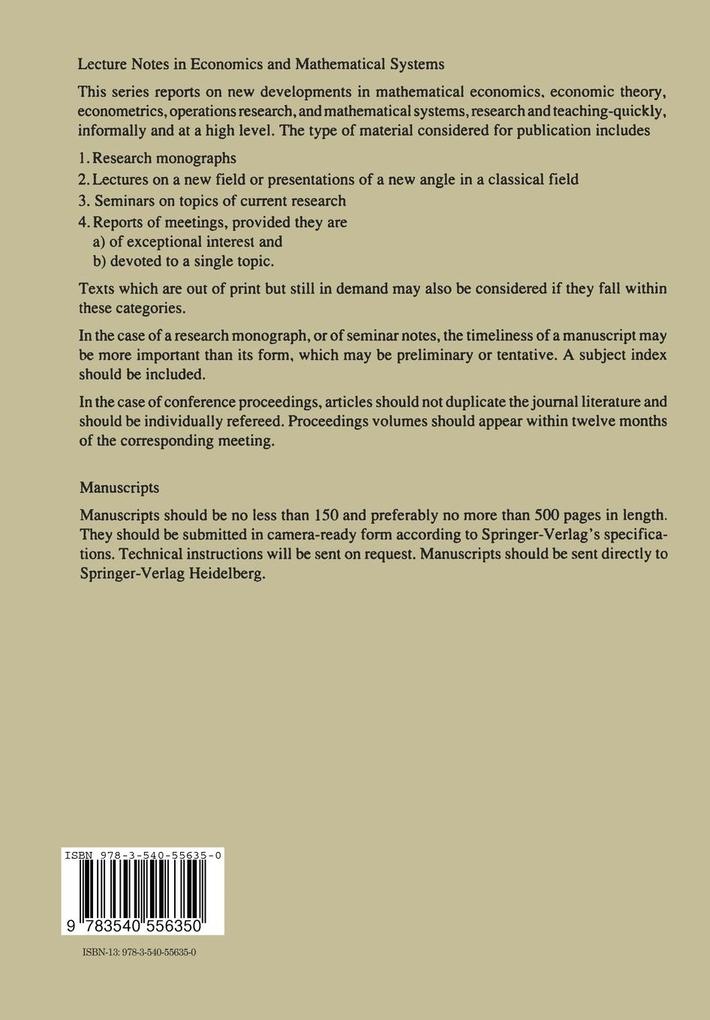
Zustellung: Fr, 18.07. - Mo, 21.07.
Versand in 2 Tagen
VersandkostenfreiThis monograph is the result of merging parts of the authors's doctoral dissertations presented at The University of Pennsylvania in the spring of 1991. We would like to thank the members of our dissertation committees, Francis X. Diebold, Roberto S. Mariano and Marc Nerlove for their guidance and helpful comments. We received very good comments from Albert Ando, Yin-Wong Cheung, William English, S0ren Johansen, W. Krelle, Bruce Mizrach and seminar participants at the University of Pennsylvania and the XV Simposio de Analisis Econ6mico in Barcelona. Our thanks also to Werner A. MUller of Springer-Verlag for his help. Of course, any remaining errors are ours. We are indebted to Departamento de Trabajo del Gobierno Vasco and the Department of Economics at the University of Pennsylvania for financial support through our graduate studies. The research underlying this work was partially supported by two Alfred P. Sloan Foundation Fellowships. We could not have written this monograph without the support received from our families. Sections wi thin chapters are numbered using roman numerals. References to equations within the same chapter are of the form (11. 7) whereas if they correspond to different chapters are (2. 1V. 4). TABLE OF CONTENTS CHAPTER 1. Introduction 1 CHAPTER 2. The Monetary Model of Exchange Rate Determination. I. Introduction. . . . 7 II. Monetary Models . . . 8 III. The Asset Market View 13 IV. Empirical Evidence 15 V. Treatment of Nonstationary Variables 16 CHAPTER 3. Long Run Exchange Rate Determination I.
Inhaltsverzeichnis
1. Introduction. - 2. The Monetary Model of Exchange Rate Determination. - I. Introduction. - II. Monetary Models. - III. The Asset Market View. - IV. Empirical Evidence. - V. Treatment of Nonstationary Variables. - 3. Long Run Exchange Rate Determination I. - I. Introduction. - II. Some Preliminary Definitions and Engle and Granger Procedure. - III. Interpretation of Previous Results in terms of Cointegration. - IV. Testing for Cointegration Using Engle and Granger Methodology. - V. Empirical Results. - VI. Conclusions. - Appendix A. - 4. Long Run Exchange Rate Determination II. - I. Introduction. - II. Description of The Time Series Model. - III. The Data And Diagnostic Tests. - IV. Estimation And Testing For Cointegration. - V. Tests of Several Hypotheses. - VI. Conclusions. - Appendix A. - Appendix B. - 5. Short Run Exchange Rate Determination. - I. Introduction. - II. Weak Exogeneity of the Exchange Rate. - III. Testing for Weak Exogeneity. - IV. The Asset Market View Derived from an Error Correction Model. - V. Conclusions. - Appendix A. - 6. Effect of Non-Normal Disturbances on Likelihood Ratio Tests. - I. Introduction. - II. The Data Generating Process. - III. Hypotheses Tests. - IV. The Simulation Exercise. - V. Conclusions. - Appendix A: Size of the Tests. - Appendix B: Power of the Tests. - 7. Estimation of the Time Series Model. - I. Introduction. - II. Two Different Interpretations of the Time Series Model. - III. Estimation of the Model. - 8. Prediction in Cointegrated Systems. - I. Introduction. - II. Properties of the True Forecasts from a Cointegrated System. - III. Estimated Forecasts from a Cointegrated System. - 9. Nominal Exchange Rate Prediction. - I. Introduction. - II. Review of Literature. - III. Forecasting Exercise. - IV. Conclusions. - Appendix A. - 10. A Simulation Exercise. - I. Introduction. -II. The Data Generating Process. - III. Results. - Appendix A. - 11. Conclusions. - Data Appendix.
Produktdetails
Erscheinungsdatum
05. August 1992
Sprache
englisch
Auflage
Softcover reprint of the original 1st edition 1992
Seitenanzahl
212
Reihe
Lecture Notes in Economics and Mathematical Systems
Autor/Autorin
Javier Gardeazabal, Marta Regulez
Verlag/Hersteller
Produktart
kartoniert
Abbildungen
X, 194 p.
Gewicht
375 g
Größe (L/B/H)
244/170/12 mm
ISBN
9783540556350
Entdecken Sie mehr
Bewertungen
0 Bewertungen
Es wurden noch keine Bewertungen abgegeben. Schreiben Sie die erste Bewertung zu "The Monetary Model of Exchange Rates and Cointegration" und helfen Sie damit anderen bei der Kaufentscheidung.









